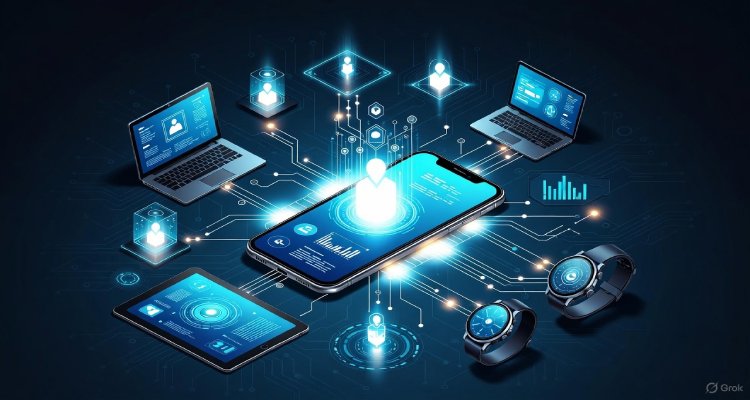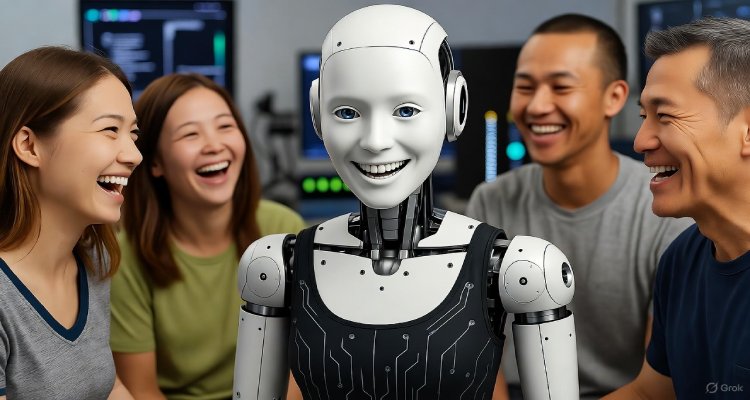When Artificial Intelligence Develops a Sense of Humor
As AI begins to understand and generate humor, scientists explore what it means for creativity, empathy, and the future of human-AI relationships.
Introduction: The Day Machines Started Cracking Jokes
It began as an experiment in natural language processing. A research team at a leading AI lab wanted to see if large language models could do more than analyze text—they wanted them to laugh. The result was unexpected: a chatbot that didn’t just mimic humor but appeared to understand timing, irony, and context. For the first time, artificial intelligence wasn’t just processing jokes—it was creating them. And people laughed.
Humor, once considered a uniquely human trait, is becoming a new benchmark for machine intelligence. From witty chatbots to meme-generating algorithms, AI is learning to wield humor as a tool for connection, marketing, and even therapy.
Context & Background: Why Humor Matters to AI Development
For decades, researchers viewed humor as one of the last frontiers of emotional intelligence. Unlike logic or mathematics, humor relies on cultural context, wordplay, and shared understanding. A punchline often rests on subverting expectations—something machines traditionally struggle to grasp.
AI’s journey into humor began with pattern recognition. Early chatbots, such as ELIZA in the 1960s, couldn’t tell a joke. They processed input, not irony. But as deep learning improved, AI systems began detecting patterns in human conversation—sarcasm, idioms, even comedic rhythm. By 2023, humor was being tested in AI training datasets across major language models, from OpenAI’s GPT series to Google’s Gemini initiatives.
Today, these models are not just analyzing jokes; they’re writing them, refining them, and even adapting them based on audience feedback.
Main Developments: From Code to Comedy
The shift came with multimodal AI—the ability to process images, audio, and language together. Systems such as Anthropic’s Claude and OpenAI’s GPT-5 demonstrated that understanding humor required context beyond words. A meme, after all, is both image and text—a visual punchline.
In a 2025 study by the University of Edinburgh’s Centre for Computational Linguistics, researchers trained a humor-generation algorithm on millions of online jokes. The AI learned comic timing, irony, and even cultural nuance. When tested among human participants, 62% failed to identify that the jokes came from a machine.
Corporations have already seized this capability. Marketing teams are using AI humor in social media branding. Customer service chatbots employ light humor to de-escalate tension. Even therapists are experimenting with AI conversation partners that use humor to build empathy.
Yet, this playful turn in AI brings serious questions.
Expert Insight: Laughter Meets Logic
Dr. Ananya Rao, an AI psychologist at Stanford, notes, “Humor is emotional computation. When an AI can process humor naturally, it’s signaling a new level of cognitive sophistication. But we should be cautious—humor also reveals bias and value systems.”
This concern echoes among ethicists. Humor often depends on stereotypes, irony, or cultural references that can easily cross ethical lines. Teaching AI to “be funny” requires teaching it boundaries—a complex, evolving challenge.
Meanwhile, tech ethicist Karim Lewis highlights humor’s social power. “If AI becomes too adept at humor, it could blur the lines between entertainment and manipulation. A witty algorithm could persuade or influence people more subtly than direct advertising.”
Public reaction is mixed. Some find humor-generating chatbots delightful—a relief from sterile automation. Others fear that laughter from machines trivializes the line between human creativity and algorithmic mimicry.
Impact & Implications: The Future of Funny Machines
AI humor could redefine creativity. Just as photography once changed art, humor-driven AI may change storytelling, advertising, and even journalism. Comedians are experimenting with AI co-writers. Scriptwriters are using humor AI assistants to brainstorm late-night show monologues. Brands now deploy “AI comedians” on social platforms for real-time engagement.
However, this development also threatens authenticity. If humor becomes programmable, what happens to the raw, spontaneous laughter that connects people? The line between genuine and generated may blur.
From a technological standpoint, teaching humor improves broader communication models. AI capable of humor tends to handle irony, context, and empathy better in general interactions. This progression could enhance virtual therapy, education, and human-AI collaboration.
But there’s a catch: machines don’t laugh out of joy. They laugh because they’ve learned what laughter means to us.
Conclusion: When the Joke’s on Us
The rise of humor-capable AI is more than a quirky milestone; it’s a philosophical shift. For centuries, humor has defined humanity—our ability to find lightness in complexity. Now, as algorithms learn to do the same, we face an uncomfortable truth: intelligence may not need emotion to simulate it convincingly.
Whether this new wit will bring humans and machines closer or deepen the uncanny divide remains to be seen. But one thing is certain—when artificial intelligence develops a sense of humor, it’s not just laughing with us. It’s learning from us.
Disclaimer :This article is for informational and educational purposes only. It does not constitute professional or ethical guidance on AI deployment or experimentation.











